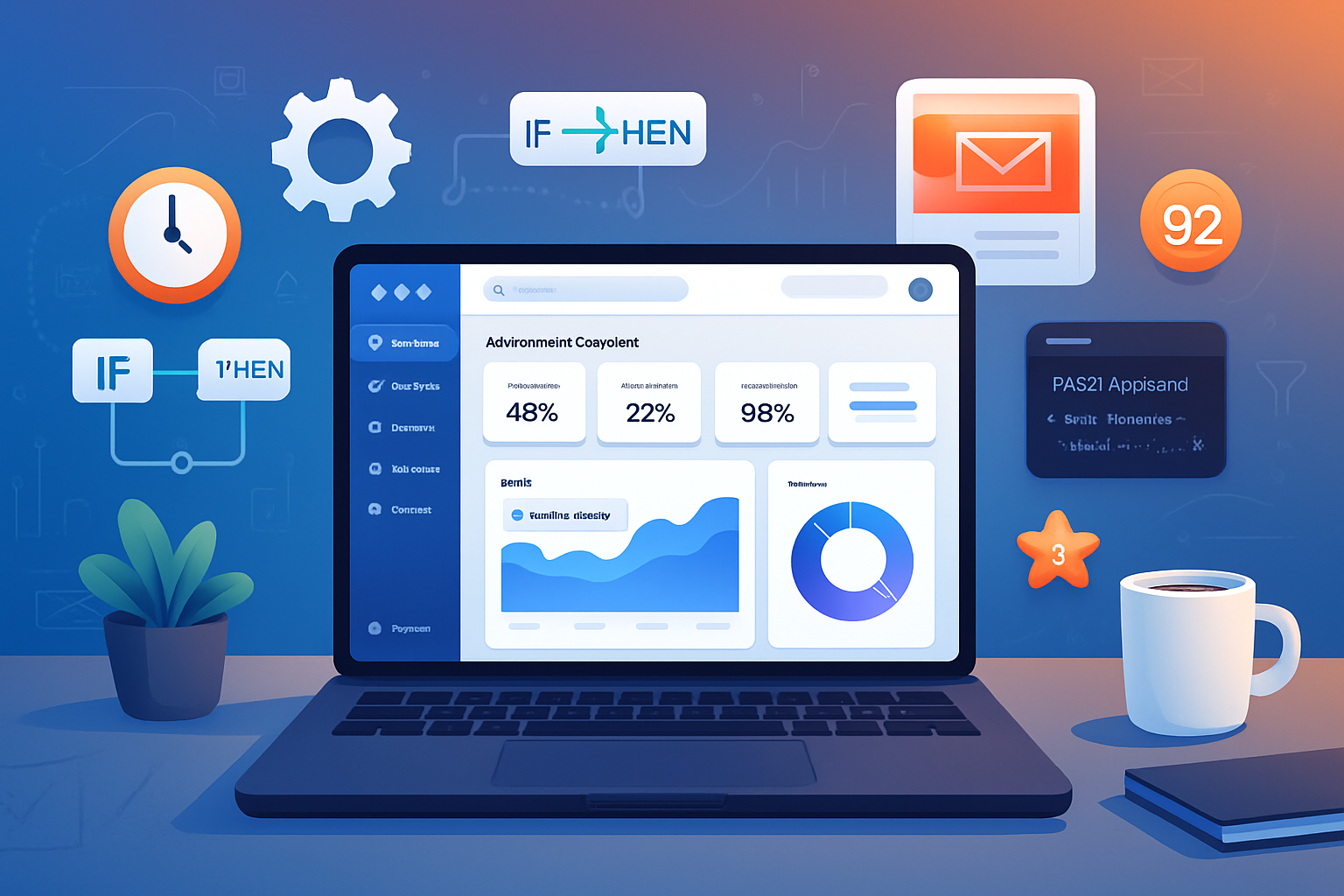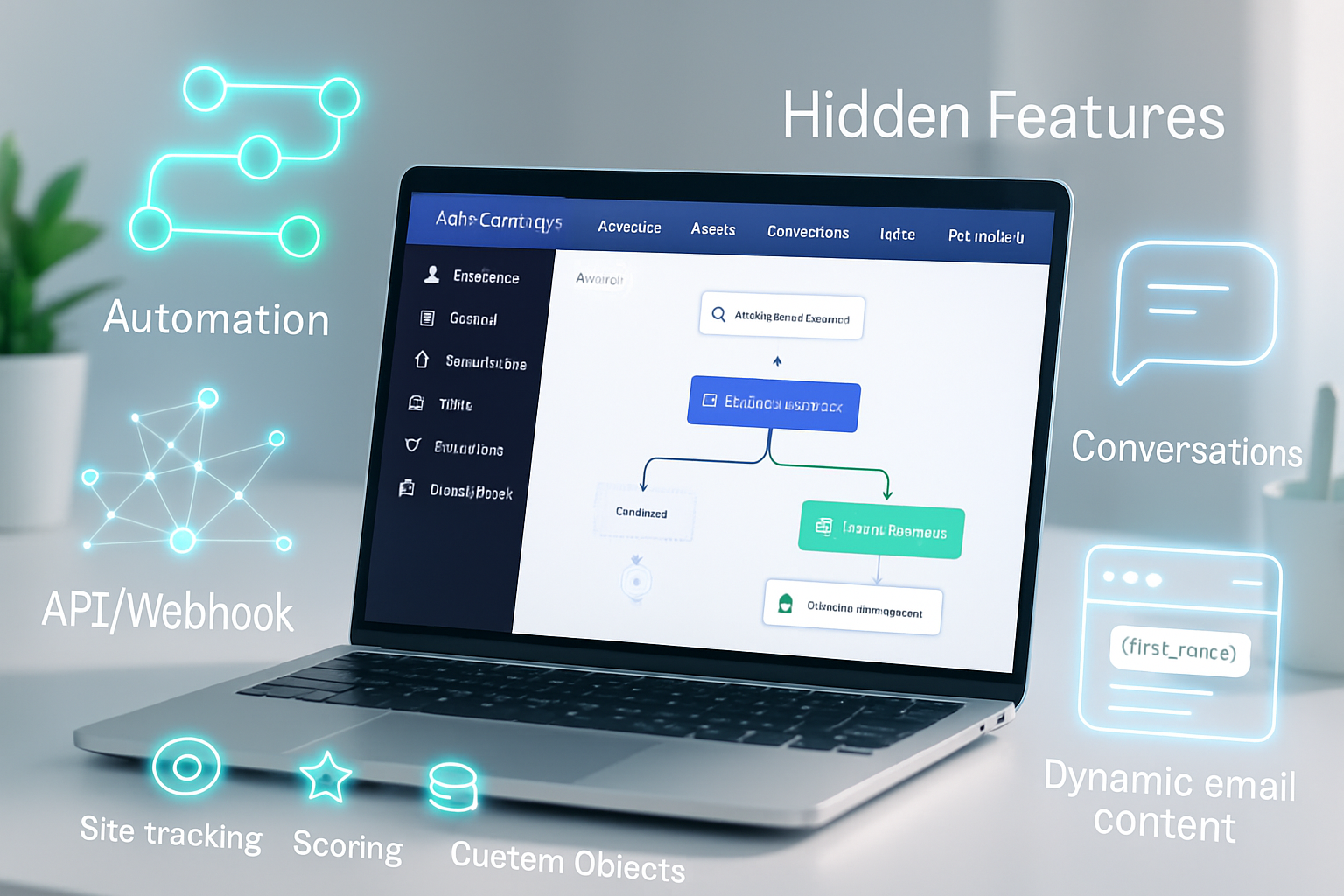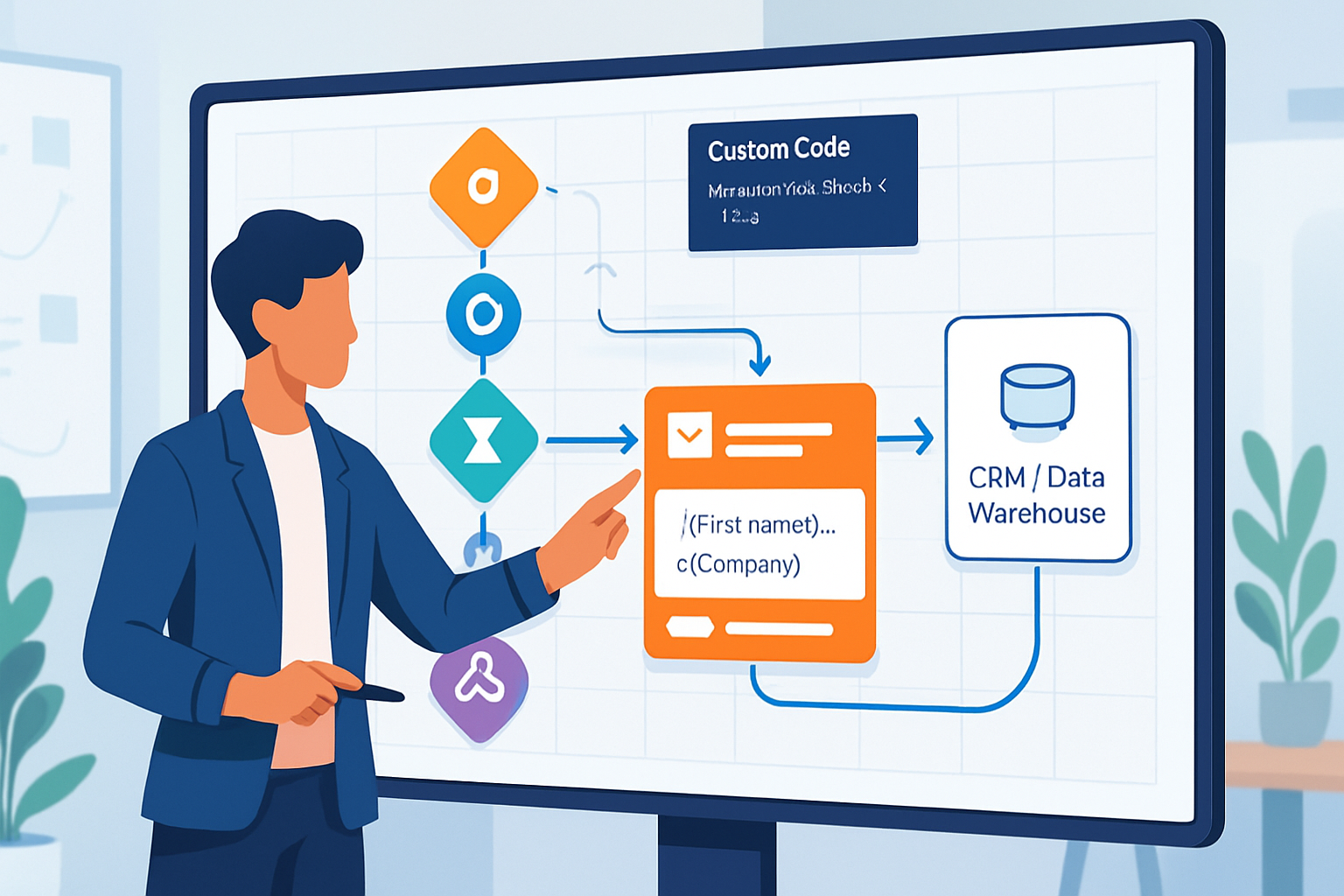· marketing · 7 min read
10 Hidden Features of Sendinblue That Will Transform Your Email Marketing
Discover 10 lesser-known Sendinblue features - from conditional content and smart sending to transactional APIs and contact scoring - that can raise engagement, improve deliverability, and streamline your workflows.

Intro
Email marketing platforms often hide their most powerful capabilities behind menus, toggles, and feature labels you only notice when a campaign isn’t performing the way you want. Sendinblue (Brevo) is no exception. Below are 10 underused - but immediately useful - features that can shift your results from “meh” to measurable growth.
Why these matter
- Better personalization and timing = higher open/click rates.
- Smarter automation = less manual work and fewer missed opportunities.
- Transactional and deliverability tools = more reliable inbox placement.
1) Conditional (Dynamic) Content Blocks
What it is: Show or hide sections of a campaign based on a contact’s attributes (location, language, subscription status, custom fields).
Why it helps: One email template, multiple highly relevant messages. Instead of sending separate campaigns, tailor content per recipient and keep your reporting centralized.
How to use it (quick tip): In the drag-and-drop editor you can add a “Dynamic content” block and set rules like “show if contact.COUNTRY is FR”. For campaign templates use contact attributes like {{ contact.FIRSTNAME }} for personalization.
Best practice: Combine dynamic blocks with clear fallback content for contacts missing the target attribute.
2) Send Time Optimization (STO)
What it is: AI-driven scheduling that chooses the hour when each recipient is most likely to open your message.
Why it helps: Different people read emails at different times. STO increases opens by sending each contact at their ideal time automatically.
How to use it: In the scheduling step of a campaign select “Send at best time” (Sendinblue will analyze historical engagement to decide).
Caveat: STO needs historical data - it works best after you’ve sent a few campaigns to the same audience.
3) Smart Sending (Frequency Caps)
What it is: Automatically suppress messages to contacts who have received another marketing email within a timeframe you define.
Why it helps: Prevents over-mailing and reduces unsubscribe rates and spam complaints.
How to use it: Enable Smart Sending in campaign options and set the minimum hours/days between marketing emails for a contact.
Tip: Pair Smart Sending with segmentation to create VIP or high-contact-frequency rules for special audiences.
4) Resend to Unopened (with Improvements)
What it is: Automatically or manually resend to recipients who didn’t open the first send - with a changed subject line, preheader, or preview text.
Why it helps: A large share of opens comes from follow-up sends with a new subject line. Resending boosts engagement without increasing list size.
How to use it: Create a segment of recipients who didn’t open the campaign and send a tweaked version. Some Sendinblue plans provide a “resend to unopened” workflow shortcut.
Best practice: Change the subject and preview text and experiment with a different CTA to see what resonates.
5) Advanced Segmentation and Search Logic
What it is: Build segments using multiple conditions, cross-campaign engagement, custom fields, signup source, and logical operators.
Why it helps: Overly broad lists lead to poor results. Rich segmentation lets you treat high-intent vs. low-intent users differently (e.g., purchase intent vs. newsletter readers).
How to use it: Use the Contacts > Segments section. Combine behavior (opened/clicked) with attributes (signup date, lifecycle stage) to create micro-segments.
Example segment: Contacts who opened any campaign in the last 30 days AND purchased within 90 days.
6) Marketing Automation Workflows - Beyond the Welcome Series
What it is: Visual workflows with triggers, conditions (IF/ELSE), waits, goals, and actions (send email, update contact, webhook, add to list).
Why it helps: Automations can do everything from cart abandonment to lead nurturing and reactivation - and they can react to contact behavior in realtime.
Standout uses:
- Lead scoring to move prospects through the funnel
- Automated re-engagement after inactivity
- Triggered transactional follow-ups after purchases
Pro tip: Use “goal” nodes to stop a sequence when the contact completes the desired action (e.g., makes a purchase).
7) Transactional Emails via SMTP/API + Templating
What it is: A separate transactional email system (SMTP relay and REST API) and templating system for receipts, password resets, notifications.
Why it helps: Transactional emails are often the most critical messages you send - they must be fast, deliverable, and dynamic.
Quick example (curl) - send a transactional email via Sendinblue’s API:
curl -s --request POST \
--url https://api.sendinblue.com/v3/smtp/email \
-H 'api-key: YOUR_API_KEY' \
-H 'Content-Type: application/json' \
-d '{
"sender": { "name": "Store", "email": "no-reply@yourdomain.com" },
"to": [{ "email": "customer@example.com", "name": "Customer" }],
"subject": "Your receipt - Order #1234",
"htmlContent": "<html><body><h1>Thanks for your order</h1></body></html>",
"params": { "ORDER_ID": "1234", "TOTAL": "$59.99" }
}'Note: Use template variables (params) to inject order details or dynamic content.
8) Heat Maps & Click Tracking in Reports
What it is: Click maps show which areas of your emails draw the most clicks - both link-by-link and as a visual heat map.
Why it helps: Identify where recipients are clicking (or not) so you can redesign layout, CTAs, and priorities.
How to use it: In Campaign Reports open the click statistics and the heat map visualization. Combine that with A/B testing to iterate quickly.
Insight hack: If a non-CTA element gets clicks (e.g., images or navigation), repurpose it as a tactical CTA in the next send.
9) Sub-Accounts, Sender Domains & Team Permissions
What it is: Create sub-accounts for agencies or multiple brands, configure dedicated sending domains, and manage fine-grained user permissions.
Why it helps: Keep data, billing, and sender reputations separated across brands or clients. Dedicated domains and sub-accounts help protect deliverability when one brand has issues.
How to use it: In your account settings look for “Sub-accounts” or “Users & security” to create roles and add alternative sender domains.
Business tip: Give each major brand or client its own sender domain and API key to maintain a clean sender reputation.
10) CRM + Contact/Lead Scoring
What it is: Built-in CRM to track deals and activity plus the ability to score contacts using actions and attributes.
Why it helps: Move beyond open/click metrics - score contacts to prioritize outreach and trigger sales handoffs automatically.
How to use it: Use contact properties and automation nodes to add or remove points based on behavior (email opens, website visits, form submissions), then filter or create automations for high-score leads.
Pro tip: Tie lead score thresholds to a workflow that notifies sales or creates a CRM task when a lead becomes sales-qualified.
Bonus: Integrations and developer shortcuts
- Native integrations (Shopify, WordPress, CRMs) let you bring behavioral data into Sendinblue without custom code.
- Webhooks in automations enable real-time synchronization with your backend or analytics tools.
- Dedicated IP addresses are available for high-volume senders concerned with reputation.
Checklist: How to find and enable these features quickly
- Open Campaign > Create campaign > Explore the editor for dynamic content and personalization tokens.
- In scheduling, test “Send at best time” and be sure Smart Sending is configured in campaign options.
- Build a small automation (welcome or abandon) and add a “goal” node to understand flow control.
- Go to Contacts > Segments and practice creating a compound condition (behavior + attribute).
- Test the transactional API with a staging API key and a simple curl call (see example).
- In Reports, open the heat map to see where real users clicked.
- Check Users & Security to set sub-accounts and send domains if you manage multiple brands.
- Create a simple lead scoring automation and watch how contacts move through stages.
Final notes
These features are often overlooked because they live in specialized areas of the Sendinblue interface (automation builder, transactional settings, or reporting). Start small: pick 2 features from this list, run a single test campaign or workflow, and measure uplift. Many teams see double-digit increases in engagement just from using dynamic content plus STO or by turning on Smart Sending to reduce complaints.
For official docs and walkthroughs, start with Sendinblue’s help center: https://help.sendinblue.com/



